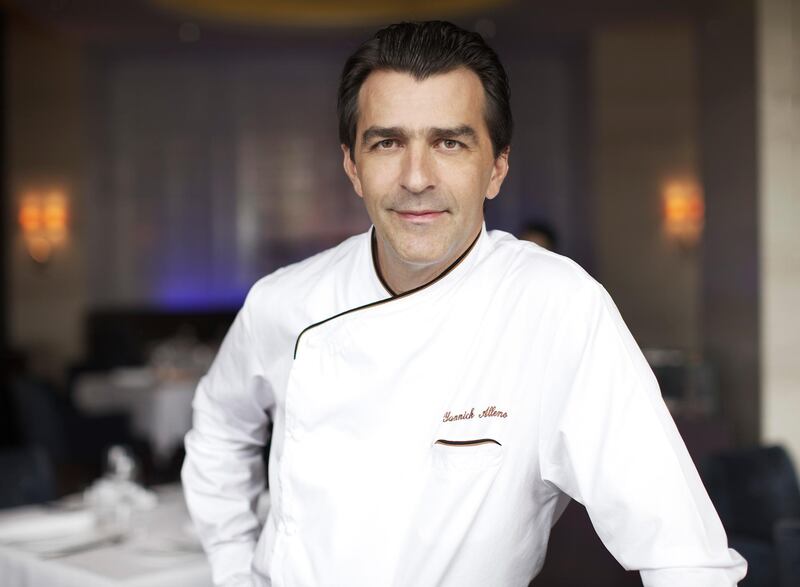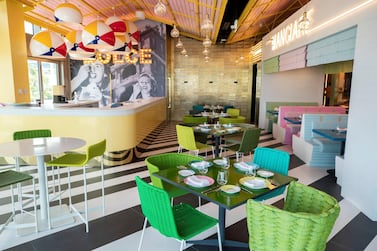"It's like you're on a bicycle. When you stop pedalling, you fall right off," begins Yannick Alleno when I meet him in Dubai.
It is precisely this relentless attitude to his trade that has seen the French chef rise to the upper echelons of the gastronomy world.
Credited as the man responsible for the reinvention of modern French cuisine, the Parisian chef now has a portfolio of eateries in France – including an address on the Champs-Elysees that’s home to his three-Michelin-starred restaurant and a one-star sushi bar – and around the world.
'Chefs can change the world'
In Dubai, Alleno has been serving up culinary treats for nine years, overseeing all eateries at One&Only The Palm. A recent trip to Italy inspired the chef to come back to the UAE and put in place a new menu at 101 Dining Lounge and Bar.
The menu was inspired by a visit to artist Damien Hirst's controversial exhibition, Treasures from the Wreck Unbelievable, in Venice. "That show made me think," says Alleno. "I was shocked by what I saw. Hirst drew a world, and that world could be us. That's the purpose of art and artists, to provoke you. It was an alert, a warning that we need to look after what we have. And I wanted to convey this in the menu."
Perched above the Arabian Gulf, 101's oceanside location lent itself to the theme. Focusing on sustainably sourced seafood, the menu presents dishes that fuse age-old cooking techniques, such as smoking, salting and fermentation, with artistic plating and a real consciousness of using every single part of an ingredient. "Before, we were focusing too much on what is up top rather than what is beneath the ocean surface. Now, we know that we need to take care of the planet. That means when we take a fish from the ocean, we need to use all of it – the head, the skin, the eggs, the bones, everything.
"We know that 30 per cent of what we produce today is waste, so we have to take care of that," says Alleno. He pauses for a brief moment, then adds: "I believe chefs really can change the world."
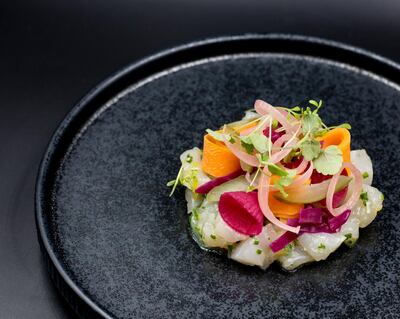
'The truth was in France'
Having dreamt of being a chef since he was only eight years old, Alleno began his career in Paris, at Le Royal Monceau, under chef Gabriel Biscay. However, it was when he took up a position at the historic Drouant restaurant, under chef Louis Grondard, that he truly began to excel.
“I learnt how to play with fire, and the connection between food and fire. And that is cooking. You have to be linked with the heat and temperature, so you need to play with it. It’s like a tango.”
Alleno soon went on to achieve Michelin fame, garnering three stars at Le Meurice. But merely 10 years into his career, he felt that something wasn't right. "I felt really deeply that I wasn't being true to myself. When you have three stars, everyone wants to catch you. It's cool, but it has a dark side when you're not cooking or plating in the kitchen and instead talking to television crews. That feeling made me realise I had to get out."
And so he did. Not only from the restaurant, but from Paris altogether. "I went all over the world. I went to Peru and I went to China. I wanted to find new inspiration, but the more I travelled, the more I understood that the truth was in France," he says with a smile. "And that's something I didn't really appreciate before."
Returning to Paris, he set his sights on simplifying what had become a “convoluted” cuisine. In the face of the prevailing complexity, Alleno stripped dishes back to basics and, in doing so, realised the importance of sauce in French cuisine. “Sauce is everything. It is the verb. Just like you cannot write a phrase without a verb, you cannot have a French plate without sauce.”
Alleno reaches over and, taking my notebook from me, he begins to sketch. “Since the beginning of humanity, this [he scribbles furiously] is sauce.”
I look quizzically at the unidentified round object on the page. He catches my expression and clarifies that he has drawn a pot. "Here we put elements – carrots, leeks, onion, celeriac, etc," he says, as circular representations of these vegetables appear in the "pot".
“Then we boil it for a certain time to give a taste to the liquid.”
He explains that to improve the taste, the sauce must then be concentrated, something that has typically been done using fire – and therein lies the problem. “Fire is disruptive. So instead I took the carrot, the celeriac, the Dover sole, at its own temperature. For example, the celeriac is perfect at 83 degrees for 12 hours, pea should be 64 degrees for four hours and so on. I had to find a way to take the perfect equation, then concentrate it to reduce the water. And that’s when I decided to use ice instead of fire.”
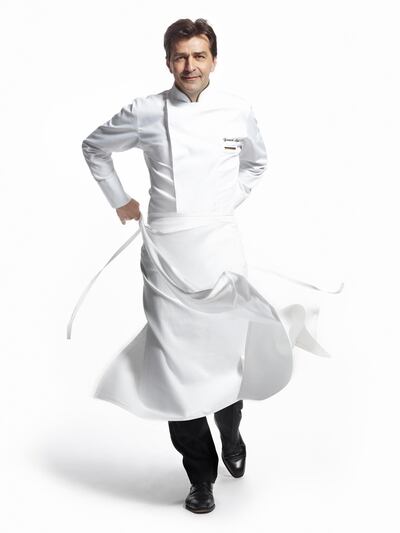
By not introducing additional heat to the mix, Alleno preserves the purity of ingredients and gives himself total control over the creation. Once the sauce is crafted to perfection, the majority of the work is done, explains the chef. “If you want to build a serious plate, 80 per cent has to be the sauce. It’s the link between all the elements. And that,” he states, putting down my pen, “is how I got so many stars.”
'Focus on what you can do'
The chef quickly follows this declaration by telling me that he’s not really doing anything new. In fact, for more than a century, French chefs were trained using a book written by Auguste Escoffier that insisted trainee cooks must master 70 French sauces before they were allowed to cook anything else.
In 2014, Alleno wrote his own book, Sauces: Reflexions of a Chef. In it, he writes about the demise of this fundamental element of French cuisine in the 1980s, when the industry turned to using powder as a quicker, cheaper alternative.
“French hotels were struggling [at the time] and hoteliers turned to the British for advice. Not knowing French cuisine, these people went into the kitchen and saw the role of saucier [or saute chef]. They told kitchens to get rid of this role and they would be able to make more money.”
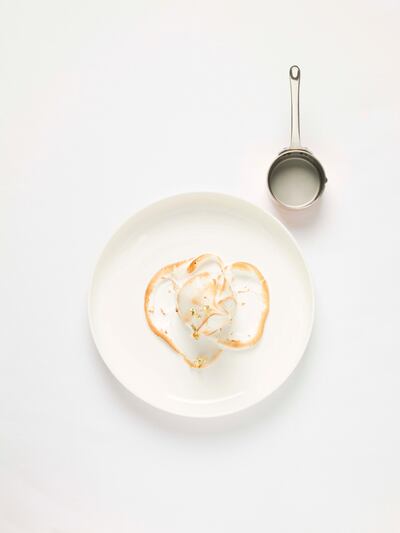
Alleno now refers to sauces as his power food, his speciality. He draws comparisons to fellow French chef Alain Ducasse, the man who currently boasts the most Michelin stars in the world. “The first time Ducasse went to Russia, he made a simple pâté of salmon, he added some caviar and then made a delicious butter sauce. The people said ‘wow’ – they’d never had anything like that before. So when Ducasse travelled back to Russia next time, he went with many packets of butter in his luggage. He knew it was his power.”
Alleno realises that his ability to change the world as a chef is limited to elements that he can control. “When you change the sauces, you change your plate. You cannot change the sea bass – you’re not God – so focus on what you can do,” he says. And with the introduction of a sustainable and conscientious seafood menu in Dubai, a small but important effort in a city overflowing with upscale eateries and big brunches, it is evident the chef continues to cook by his own rules.
